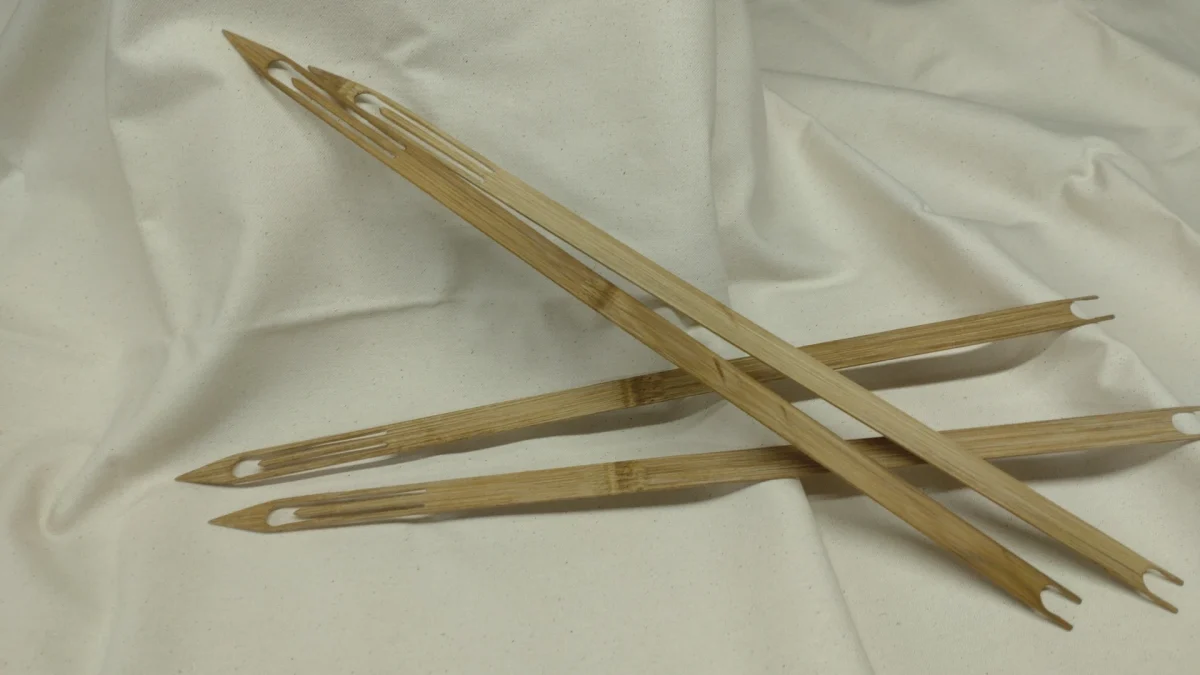
Japan’s got all sorts of amazing traditional crafts, you know? Things like lacquerware – Wajima-nuri and Tsugaru-nuri come to mind – and beautiful ceramics like Arita-yaki and Kutani-yaki. And then there are the woven textiles, all made using these incredible old techniques.
Now, I’m not exactly studying those fancy crafts myself, but I’ve always been drawn to the old mingu (民具), the traditional everyday tools and household items, that we have back at Mom and Dad’s. Plus, I just love making things with my own two hands.
And it’s not just the old Japanese stuff that gets me going. I also enjoy crafting things related to my hobby, fly fishing. I make some of my own gear.
【Traditional Craft】Saga Nishiki

So, I heard about this weaving technique from Saga Prefecture called Saga Nishiki.
Kashima Nishiki and Saga Nishiki continue to captivate people with their beauty, taking various forms such as handbags, wallets, and obi jime (decorative cords for kimono).
https://www.asobo-saga.jp/
It is said that in the late Edo period, the wife of the lord of the Kashima Nabeshima clan, while bedridden due to illness, was inspired by the ajiro-gumi (woven bamboo pattern) on the ceiling to create this weaving style.
Originally, it was passed down as a handicraft taught to the daughters of samurai families in areas like Saga, Ogi, and Kashima.
Over time, the techniques were refined and improved, leading to the methods used today.
Characterized by its delicate and dazzling geometric patterns, this textile art uses silk for the horizontal threads and incorporates gold, silver, and lacquer into the vertical threads.
It received great acclaim at the Anglo-Japanese Exhibition held in Britain during the Meiji era and is still recognized today as one of the finest examples of Japanese hand weaving, even internationally.
And then, get this, I got a request to make a tool that’s used for this Saga Nishiki!
Turns out, the abari (網針), the needle they use for weaving Saga Nishiki, is really similar in shape to the netting needle I use for making my landing nets. That’s why this artist who works with textiles got in touch with me to make one.
Of course, it wasn’t going to be exactly the same. After we talked, we figured out the shape they needed, and then I made it out of natural bamboo.
Here’s the finished abari

Now, making this abari is probably simpler than the actual weaving, but I do every single step by hand. Plus, it’s the first time I’ve ever made a needle for something other than a landing net. And the fact that it’s going to be used for such a traditional craft made me extra careful while I was making it.
I cut the bamboo, flattened it out, made sure the width was just right, carved the groove where the thread goes, and then polished the whole thing up. Bamboo makes it lighter and more flexible than if it were made of metal or plastic, and it just has this warm, natural feel as a tool.
I feel really proud that the abari I made is going to be used in the creation of such a traditional craft. It’s pretty cool!
Additional information:
- Mingu (民具): These are traditional Japanese everyday tools and household items that reflect the way people lived and worked in the past. They often have a simple beauty and practicality.
- Ajiro-gumi (網代組): This is a traditional Japanese weaving pattern, often seen in bamboo or wooden ceilings and baskets. It has a distinctive woven or plaited appearance.
- Obi jime (帯締め): A decorative cord that is tied around the obi (sash) when wearing traditional Japanese clothing like kimono. They come in various colors and styles.
- abari (網針): This is the Japanese term for the needle used in weaving Saga Nishiki. Its shape is similar to the netting needle used for making fishing nets.



